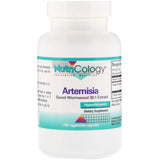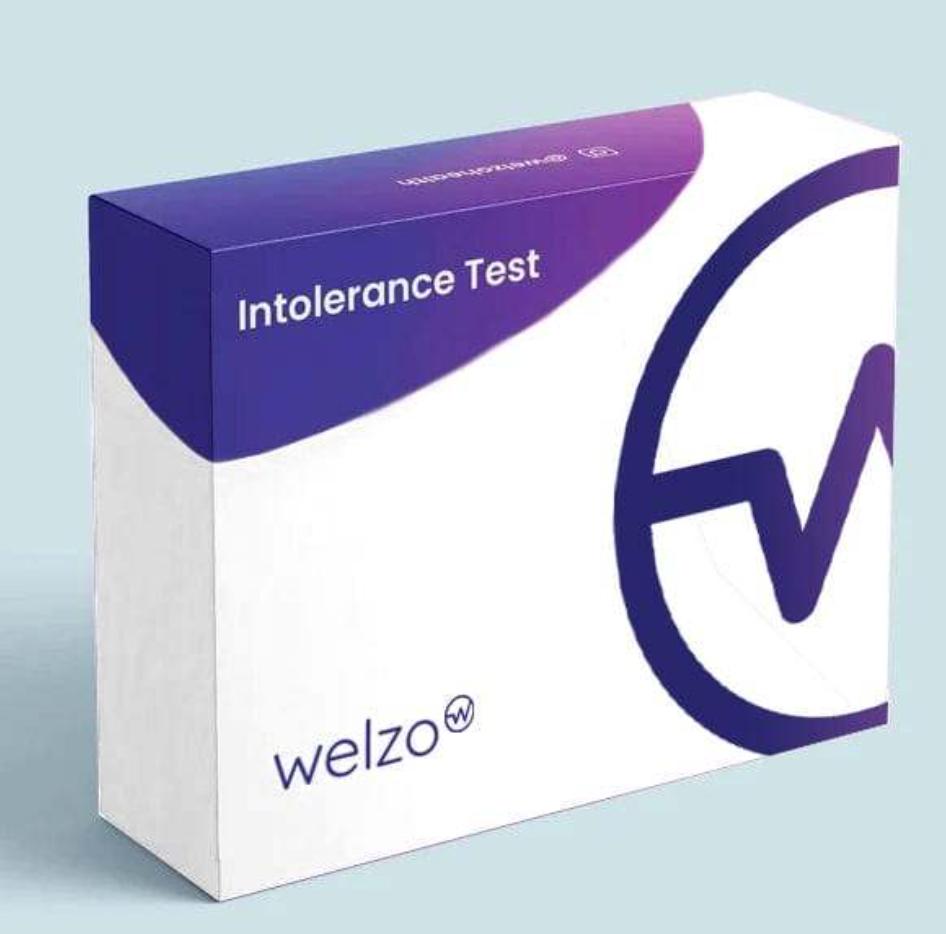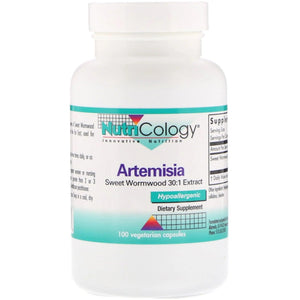What is a food sensitivity test?
.png?v=1672926110722)

Related products
Food sensitivity test usually examines how your immune system reacts to certain foods. An allergic reaction is generally brought on by IgE, whereas food sensitivity is triggered by cell-mediated reactions and antibodies like IgG, IgM, and IgA. There are several at-home tests for food allergies, but many of them need a doctor's recommendation. Online, there are a number of at-home tests, meanwhile, that claim to detect probable food sensitivities. The makers of food sensitivity tests believe that their products might enable you in identifying the meals that are causing symptoms like flatulence and discomfort. A few testing providers additionally provide concrete suggestions for easing your problems.
Some businesses promote the results of their food sensitivity tests as a way to predict how your body could react to particular nutrients or additives.

What is food sensitivity?
When your body's immune system reacts to a certain food, you have a food sensitivity. A number of negative symptoms may result from this.
The immune response triggered by antibodies such as immunoglobulin G (IgG), immunoglobulin M (IgM), and immunoglobulin A (IgA), as well as other cell-mediated reactions in the body, and this is thought to be the cause of food sensitivities.
In many plant-based meals, including legumes, there are proteins known as lectins.
Certain foods or compounds, such as lectins and nightshade plants, may cause sensitivity in some persons.
Food sensitivity vs Food Allergy test
A specific food's proteins can trigger an immune system reaction, often referred to as a food sensitivity or allergy. In many cases, this response involves an increase in the production of the antibody Immunoglobulin E (IgE). When IgE levels rise, it can cause a cascade of allergic symptoms—ranging from mild itching or swelling to potentially life-threatening reactions like anaphylaxis. Not all food reactions involve IgE, but for those that do, identifying them early is essential. Taking an IgE Immunoglobulin Blood Test can help determine if your symptoms are linked to an IgE-mediated allergy, giving you clearer insight into how your body responds to certain foods and guiding appropriate dietary or medical action.
Food Sensitivity
It's an immunological reaction to multiple foods. Although additional research is required, it is believed that the body's production of antibodies and other cell-mediated reactions is the cause of food intolerance. The signs don't create a life-threatening threat. When a certain meal is indigestible to your body, it is said to be a food intolerance. The immune system is not involved in this reaction. Instead, it might occur if your body is deficient in certain enzymes needed to digest that food. If you're experiencing ongoing symptoms and suspect a sensitivity, taking a Food Intolerance Test can help you identify which specific foods may be causing issues, allowing you to adjust your diet and improve overall well-being. If you're experiencing ongoing symptoms and suspect a sensitivity, taking an Intolerance Test can help you identify which specific foods may be causing issues, allowing you to adjust your diet and improve overall well-being.This area of study has been growing steadily, with contributions from clinical experts and testing innovators such as those featured within the Allergy Research Group, who are helping to shape the evolving landscape of food allergy and intolerance diagnostics.
Symptoms of food sensitivity
An immune response to specific food antigens may be unpleasant but not life-threatening for some people. An allergic food reaction can be distressing and even fatal for other people. Typically, food intolerance symptoms appear between a few minutes and two hours after consuming the suspected food. In rare cases, symptoms can not appear for several hours.
Among the most typical warning signs and symptoms of a food allergy are:
- 1. Tongue tingling or itchiness
- 2. Itching, hives, or eczema
- 3. Lips, face, tongue, throat, and/or other body parts swelling
- 4. Nasal congestion, wheezing, or breathing issues
- 5. Digestive symptoms like diarrhoea, vomiting, nausea, or stomach pain
- 6. Unsteadiness, fainting, or dizziness
- 7. Abdominal pain
- 8. Joint pain
- 9. Digestive system problem

Types of food sensitivity tests
Elimination diets test
The gold standard for diagnosing food sensitivities is an oral food test followed by an elimination diet. This test is carried out when the symptoms caused by the food are not life-threatening and are not brought on by an actual food allergy.
In a food challenge, you gradually eat the foods that were excluded after a time of abstinence to see how your body reacts.
Your complaints in response to ingesting a food antigen may be difficult to recognise if you don't follow an exclusion.
You could have brief withdrawal symptoms if you quit eating a portion of a particular food that makes you respond negatively. Before these symptoms subside and you're prepared to start experimenting with different foods in an oral challenge, you might need to adhere to an elimination diet for around 2 weeks.
Cell-based blood test
The cytotoxic test, which gained popularity in the 1950s, marked the beginning of cell-based tests for food sensitivities. Several states outlawed this test in 1985 due to problems with its reliability.
After that, immunologists developed testing technology. Currently available cell-based blood tests for food sensitivities include the Mediator Release Test (MRT) and the Antigen Leukocyte Cellular Antibody Test.
Although some practitioners claim that these tests are helpful, there are few trustworthy research articles on the tests.
Mediator Release test
When it seems that a person's symptoms are brought on by a meal they are consuming that triggers a peripheral immunocyte response, generally you should use Mediator Release Testing (MRT) as a specific foods sensitivity test and allergen test.
It means that there is an immune response that can be detected in the blood, and you presume that dietary antigens are the cause of it. Irritable bowel syndrome, fibromyalgia, and migraines are among the symptoms that this can cause.
MRT is an indirect technique for quantifying mediator release with accuracy. MRT accomplishes this by monitoring changes in your blood's liquid-to-solid ratio after it has been exposed to and digested with the test substance. It describes every activity your immune cells take.
This is done to show that your immune cells have generated chemical mediators like histamines, cytokines, and others. Substantial reactions are classified as either Reactive, Moderately Reactive, or Insignificant.
Antigen Leukocyte Cellular Antibody Test (ALCAT)
The Antigen Leukocyte Antibody Test (ALCAT) is used to determine which substances in food and other environmental factors a person may be intolerant to. Food allergies are not designed to be diagnosed.
The test is based on the idea that an intolerant reaction is characterized by a significant increase in leukocyte size and quantity. Finding the precise triggering substance makes it easier to avoid it, which can help reduce symptoms.
In this way, an elimination diet that concentrates on the most likely offending substances has been developed using ALCAT testing as a tool.
A sample of blood is collected for the test, which is then used to evaluate the baseline quantity and size of leukocytes and platelets after the red blood cells have been removed. The Coulter technique, a widely used method in clinical haematology, is used to measure the size and number of cells.
A little amount of blood is then cultured with many substances. Each exposure's change in cell size and number is assessed after exposure. A reaction to an intolerant substance is thought to be characterized by a 10% increase in leukocyte size.
Antibody-based blood tests
Compared to other food sensitivity tests, this sort of test has more published research, but the number of studies is still small. According to the research, removing foods based on IgG tests may help persons with IBS and migraine symptoms.
Others researchers disagree, claiming that having high amounts of IgG antibodies against food is abnormal.
Another issue is that different IgG testing labs create their internal methods. Many have variable reproducibility, which means that if the same blood sample were examined twice, the results might not be the same.
-
Muscle response test
The muscle response test, also known as extended kinesiology, involves carrying a bottle containing a food antigen with one hand while stretching the opposite arm parallel to the floor with the other.
Then the practitioner applies pressure to your outstretched arm. You will be informed if you are sensitive to the meal being tested if it can be easily pushed down, suggesting weakness.
According to the limited published research on this technique, it is no more effective at detecting food sensitivities than would be predicted by chance.
-
Provocation and neutralization test
In this test, a doctor injects specific food components believed to trigger adverse reactions under your skin—typically on your upper arm. After 10 minutes, they look to see if a scar, a raised swelling that indicates a reaction to the item being tested, forms.
If a wheel develops, they provide a second injection of the same food five times less potently than the first time. In an effort to stop the reaction, this is being done.
After ten minutes, they check your skin once again. The dose that was administered is regarded as your mitigating dose if there is no skin reaction.
It might take several progressively softer dilutions to find the neutralizing dose. To become less sensitive to the food, you can learn to frequently administer injections to yourself.
-
Electrodermal screening
This test evaluates how the electrical activity of your skin at acupuncture points changes in response to different food allergens.
You need one hand to grip a brass tube (an electrode) for this test. A computer that has the digitized frequencies of various foods is attached to the tube. A doctor places a desktop probe on a certain spot in the opposite hand of the patient.
A mathematical measurement that reflects your level of response to each food is produced based on the resistance value of your skin when it is exposed to it digitally.

Precautions with test
There are various limitations to food sensitivity tests. The main one is that the tests are not intended to be used in the accurate diagnosis of real food allergies.
Regardless of the findings of a food sensitivity test, you should stay away from food if you have a diagnosed sensitivity to it, such as peanuts. Doctors advise against restarting a specific food on your own, even if you believe you have overcome an allergy to it.
It's crucial to realize that since these tests aren't regarded as proven methods of detecting food sensitivities. Additionally, any food sensitivity test results should be compared to what occurs in your body after consuming the meal in order to confirm the test's correctness.
The fact that most labs conducting food sensitivity testing largely use food extracts from raw foods could be one factor contributing to differences. However, during the cooking or processing of food, both new and existing antigens may be produced.
Some labs may employ food extracts (antigens) of varying purity, which could affect the findings you get. Following out-of-date or incorrect results from food sensitivity tests may result in unnecessarily restrictive diets, possible nutrient shortages, and a reduction in quality of life.





































 Rated Excellent by 26,523+ Reviews
Rated Excellent by 26,523+ Reviews